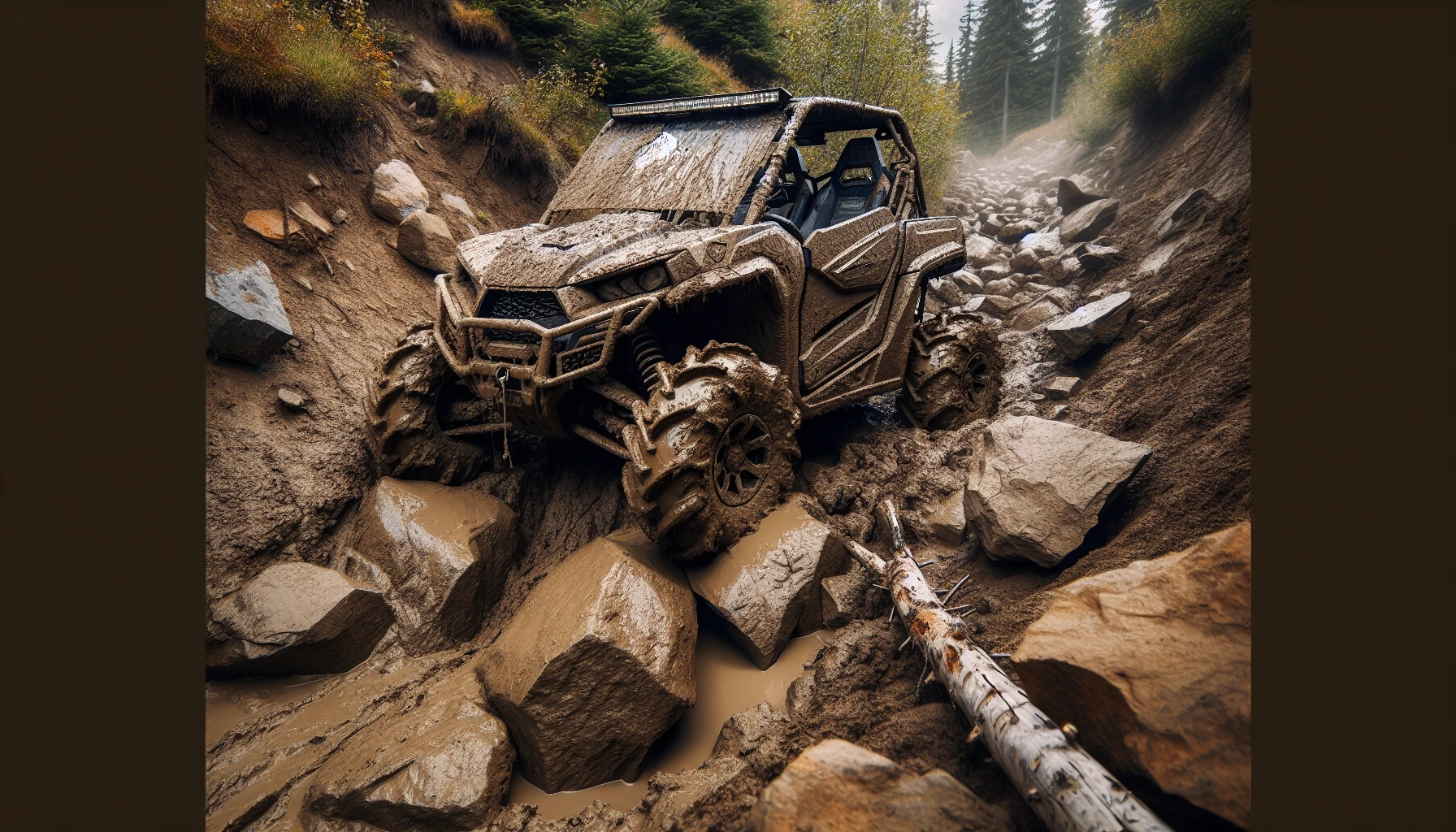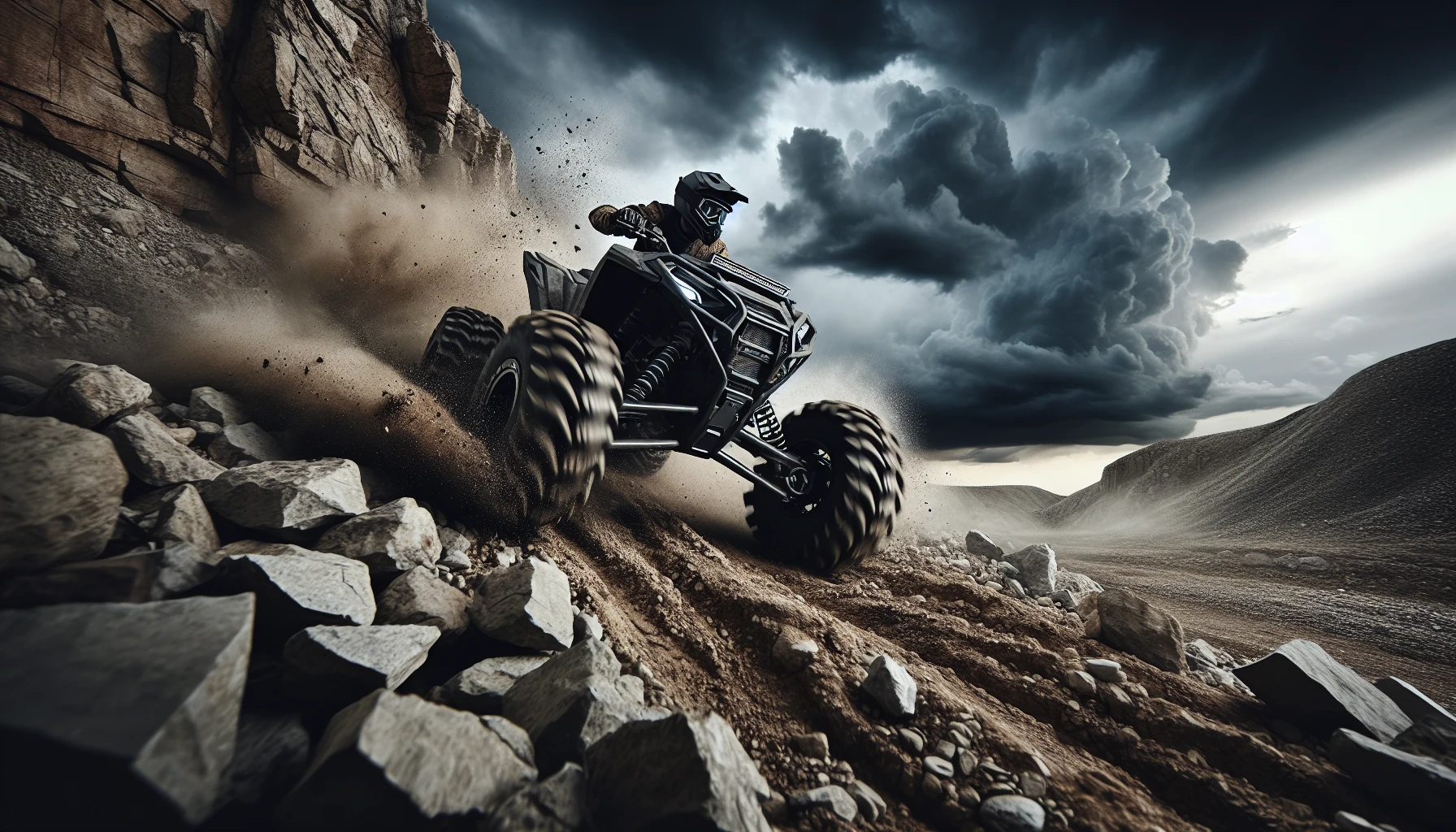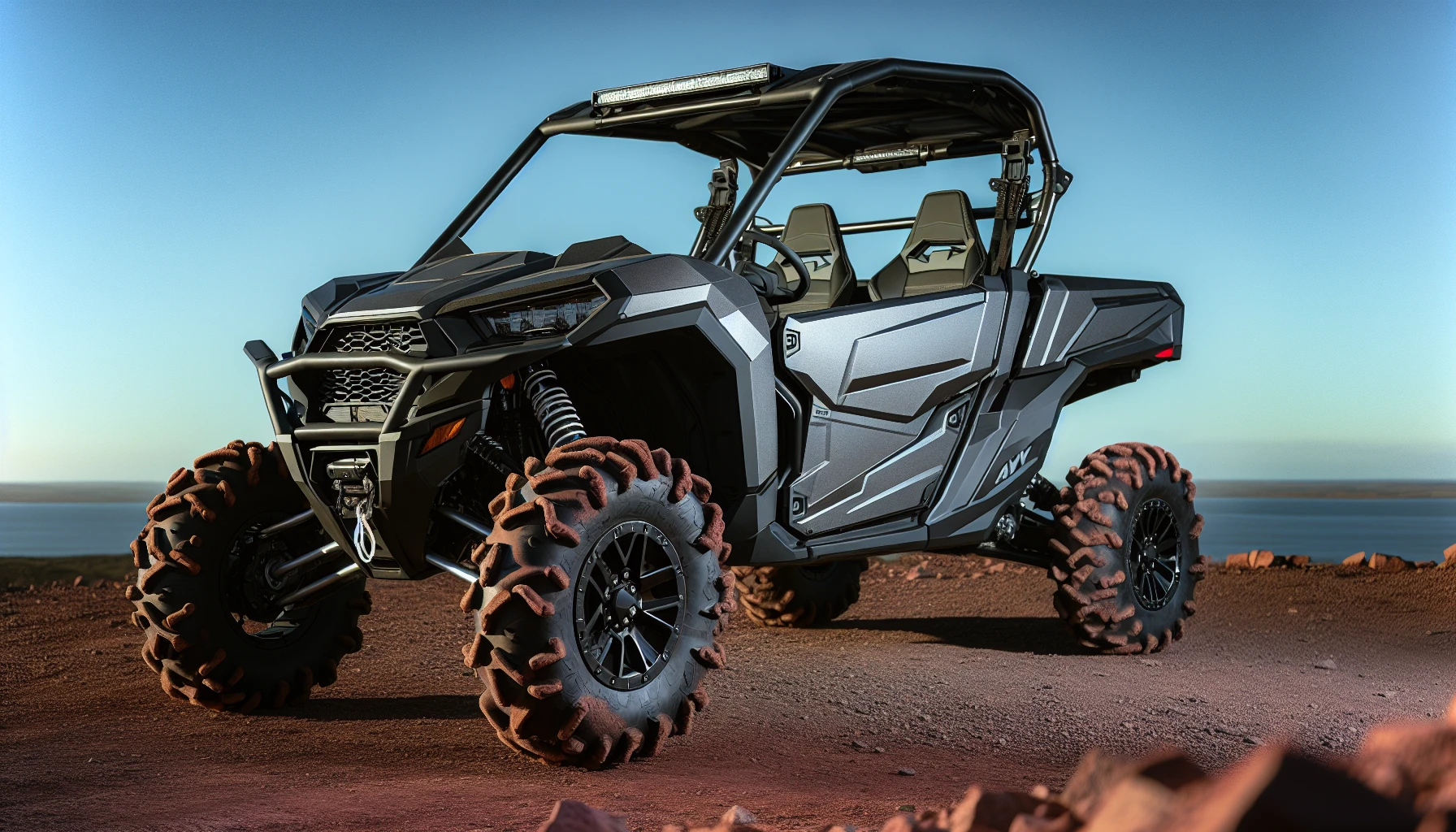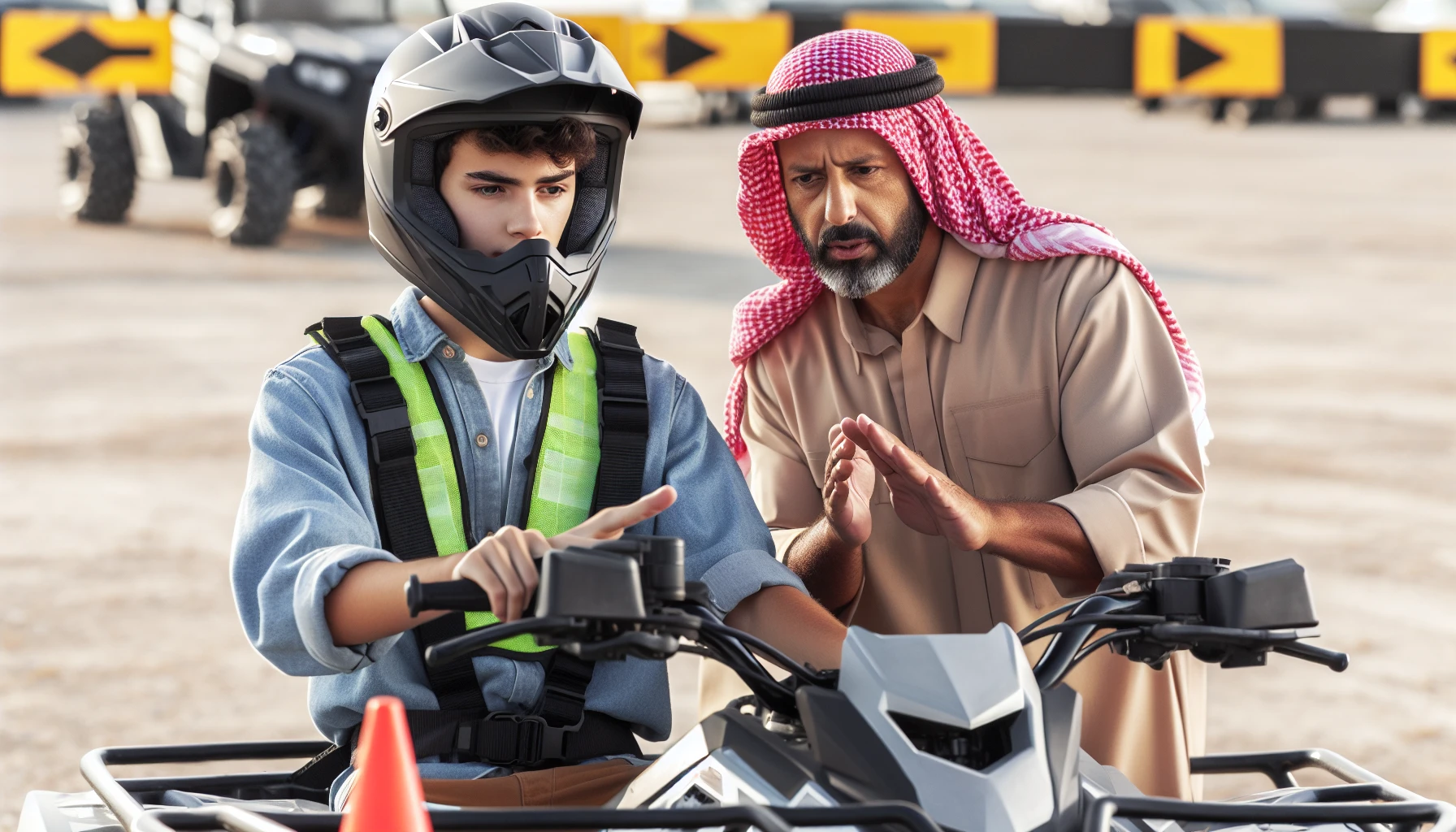Side by side ATVs have gained immense popularity in recent years, providing thrilling off-road experiences for adventure enthusiasts and outdoor lovers. While these vehicles offer excitement and fun, it’s crucial for riders to be aware of the potential dangers lurking beneath the surface of unfamiliar terrain. With every adventure comes the responsibility to prioritize safety, and understanding “the dangers of side by side ATVs” is the first step to a safer ride.
In this blog post, we will delve deep into the world of side by side ATV risks, the impact of speed and terrain on safety, essential safety features and gear, legal aspects and responsibilities, proactive measures for enhancing safety, and real stories of survivors who have faced the dangers head-on. By the end, you will be equipped with the knowledge to tackle your next off-road adventure with confidence and caution.
Key Takeaways
- Understanding the risks of side by side ATVs is essential to reduce accidents and injuries.
- Proactive measures such as training, education, regular maintenance and inspections are needed for safe operation.
- Protective gear and understanding state laws/regulations are key for ensuring a safe riding experience.
Understanding the Risks of Side by Side ATVs

Side by side ATVs, also referred to as utility vehicles, pose various risks such as rollovers, collisions, and driver overconfidence, which often result in accidents and injuries. Design flaws, operator negligence, and attempting to traverse terrain beyond the vehicle’s capabilities can all contribute to side by side accidents. Furthermore, product defects in side by side terrain vehicles, can result in significant and potentially permanent harm.
The American Academy of Pediatrics recommends that children under 16 should not be allowed to operate an ATV, as they may develop a false sense of security and underestimate the risks involved. Acknowledging these risks, it becomes necessary to comprehend the specific dangers related to side by side ATVs and methods to alleviate them.
The Rollover Threat: A Design Dilemma
Rollover incidents are frequent in side by side ATVs, also known as utility vehicles, due to their narrow, top-heavy configuration. Improper weight placement of passengers in the vehicle can represent an increased risk. In the event of a rollover, the side-by-side may sustain damage, and passengers may still be injured.
Common injuries resulting from side by side ATV rollover accidents include:
- Fractures
- Head injuries
- Spinal cord damage
- Internal injuries
Acknowledging the threat of rollover due to these vehicles’ design and the importance of the steering wheel, underscores the necessity of exercising caution and following safety guidelines during their operation.
Collisions and Casualties: When Vehicles Meet Obstacles
Collisions with objects or other vehicles may present a hazard to all occupants of the vehicle, particularly at high speeds. Side by side ATVs commonly encounter:
- objects or other vehicles
- stationary objects
- rough terrain
- mechanical failures
- rollover hazards
The presence of passengers in the ATV can increase the probability of certain crash and injury mechanisms, with head and extremity injury severity potentially varying.
Head injuries, traumatic brain injuries, bone fractures, neck and back injuries, and thoracic injuries are the most commonly reported injuries sustained from side by side ATV collisions. Awareness of potential obstacles and knowledge on safe navigation are key to lowering the risk of accidents and injuries.
Overconfidence Behind the Wheel
Excessive confidence among side-by-side ATV riders may lead to reckless behavior and heightened risk-taking off road vehicle, consequently causing accidents and injuries. Overconfidence in ATV riding can cause riders to:
- Feel invincible and less attentive to safety measures
- Engage in activities like speeding and performing dangerous stunts
- Not wear the necessary safety gear
- Disregard rules and regulations
These behaviors can potentially cause accidents or injuries.
Examples of reckless behavior caused by overconfidence in ATV riding include:
- Demonstrating showmanship
- Driving recklessly
- Not being aware of the machine’s capabilities
- Failing to carry out regular maintenance
- Attempting to exceed the machine’s limits
- Consuming alcohol while riding
Recognizing the dangers of overconfidence and practicing responsible riding can significantly reduce the risk of accidents and injuries.
The Impact of Speed and Terrain on Side by Side Safety

Speed and terrain significantly influence side by side ATV safety, as high speeds and rough terrain escalate the risk of accidents. Elevated velocity can heighten the likelihood of rollover accidents, particularly on steep or uneven terrain. High speeds can also make it more challenging to control the ATV, escalating the possibilities of collisions and traumas.
Driving at high speeds can have a considerable impact on a driver’s control of a side by side ATV, making it difficult to maneuver and react to obstacles at higher speeds, and turning can become more challenging. Hence, drivers need to monitor their speed and take necessary precautions for improved control of the side by side ATV.
High-Speed Hazards: Losing Control
High speeds can lead to loss of control and dangerous situations for side by side ATV riders. The potential risks associated with high-speed driving with side by side ATVs include:
- Increased likelihood of rollover accidents
- Possibility of collisions with objects or other vehicles
- Difficulty of maintaining control at high speeds
- Risk of overloading the ATV
- Elevated risk of serious injuries or fatalities in the event of an accident
Many factors such as terrain conditions, rider skill, and the specific model and design of the ATV can influence the ability to maintain control. Hence, it is necessary for riders to operate side by side ATVs within safe and recommended speed limits to minimize the risk of losing control.
Terrain Troubles: Unfamiliar and Unforgiving Grounds
Unfamiliar and unforgiving terrain can present hazardous conditions for side by side ATV riders, increasing the likelihood of accidents. The most significant risks for side by side ATV drivers include driving on or along the side of a highway and traversing rough off-road terrain.
The terrain can significantly influence the handling and control of a side by side ATV. Inclines or uneven ground can raise the likelihood of the ATV overturning, particularly when traveling at high speeds. Furthermore, difficult terrain such as ditches or large rocks can make it more difficult to keep control of the ATV. Considering the terrain and adjusting your driving accordingly is necessary for safety.
Essential Safety Features and Protective Gear

Safety features and protective gear are vital in mitigating injury risk during side by side ATV accidents. A side by side ATV must have a roll cage or protective structure, seat belts or harnesses, safety nets or doors, and handholds or grab bars as essential safety features. Additionally, the use of protective gear such as helmets, eye protection, gloves, and cab nets and doors can provide physical protection to the rider’s head, eyes, and hands, thus reducing the risk of injury in the event of an accident.
Ensuring that all safety features are functional and in place, as well as wearing the appropriate protective gear, can significantly minimize the risk of severe injuries in the event of an accident. Prioritizing safety allows riders to enjoy their side by side ATV adventures worry-free.
Harnessing Protection: Seat Belts and Roll Bars
Seat belts and roll bars offer protection to riders during a rollover or collision. Seat belts are not typically used in side by side ATVs as they impede passenger mobility. However, roll bars, also referred to as roll cages, can provide a protective barrier for occupants in the event of a rollover or collision.
There are various types of seat belts and roll bars available for side by side ATVs, such as the Crow Offroad UTV Seat Belt, designed specifically for off-road use and offering increased safety and protection. Implementing these safety features all terrain vehicles can help prevent injuries and ensure a safer riding experience.
Gear Up: Helmets and Other Protective Gear
Helmets and other protective gear play a key role in reducing injuries during side by side ATV accidents. The utilization of a helmet when driving or riding a side by side ATV offers essential security for the head in the event of incidents or collisions. It can help avert serious head injuries and potentially save your life.
In addition to helmets, side by side ATV riders are advised to wear:
- Eye protection
- Gloves
- Long pants
- A long-sleeved shirt or jacket
- Over-the-ankle boots
Some riders may also opt to wear chest plates and knee pads for additional protection. Wearing suitable protective gear can notably decrease injury risk, enabling riders to enjoy their off-road adventures safely.
Legal Aspects and Responsibilities of Riding Side by Sides

Legal aspects and responsibilities of riding side by sides include understanding ATV laws and regulations, as well as liability and insurance considerations. Current laws for operating side by side ATVs differ by state, making it necessary to understand your state’s specific laws and regulations before operating a side by side ATV. Some states may impose age restrictions, licensing requirements, and insurance prerequisites.
Being knowledgeable about the legal aspects and responsibilities associated with riding side by side accident by sides helps riders operate their vehicles safely and lawfully. This knowledge can help protect riders from potential legal issues and financial liabilities in the event of an accident.
Understanding ATV Laws and Regulations
ATV laws and regulations differ between states, making it necessary to familiarize oneself with the specific laws and requirements in one’s state before operating an ATV. Common ATV laws and regulations across states vary significantly, and it is essential to verify the specific regulations applicable in your state.
California and Mississippi have stringent ATV laws and regulations. Riders of motorized vehicles who fail to comply with ATV laws and regulations can incur service fees for registration, fines ranging from $1,000 to $3,000 for multiple offenses, and the prohibition of operating ATVs on public roads. Additionally, some states may mandate minimum liability insurance coverage for ATV operation.
Liability and Insurance Considerations
Liability and insurance considerations are important for side by side ATV riders to protect themselves in the event of an accident. The usual types of insurance coverages for side by side ATVs include:
- Body Injury Liability (BI)
- Property Damage Liability (PD)
- Uninsured/Underinsured Motorist (UM/UIM)
- Comprehensive and Collision coverage.
Not having insurance for side by side ATVs can have potential consequences such as:
- Financial liability for injury or property damage
- Personal financial loss for repairs or replacement
- Lack of protection against uninsured drivers
- Potential legal ramifications
Being aware of the suitable insurance coverage for your side by side ATV and understanding the associated liability is key to protecting yourself and others on the trail.
Proactive Measures to Enhance Side by Side Safety

Proactive measures for enhancing side by side safety encompass:
- Training and education: offering instruction on correct operation techniques and safety procedures, informing individuals about potential hazards and risks, fostering awareness of safe riding practices, enhancing knowledge of ATV maintenance and inspection, and promoting responsible behavior and decision-making.
- Regular maintenance: ensuring that the ATV is in good working condition by regularly checking and servicing its components.
- Inspections: conducting regular inspections to identify any potential issues or safety hazards.
These measures, endorsed by the Consumer Product Safety Commission, are vital for safe operation of side by side ATVs and can help prevent accidents and injuries.
Taking proactive measures like seeking appropriate training, educating oneself about safe riding practices, and conducting regular maintenance and inspections on your side by side ATV can notably reduce the risk of accidents and injuries, ensuring a safer off-road experience.
Training and Education: Learning to Safely Operate
Proper training and education can help riders safely operate side by side ATVs and reduce the risk of accidents. The ATV Safety Institute’s ATV RiderCourse and the Recreational Off-Highway Vehicle Association’s ROV Basic DriverCourse are recommended for side by side ATV safety.
ATV safety training provides knowledge and skills on several dangers including:
- Comprehension of the secure operation of an ATV
- Suitable use of safety equipment and gear
- Methods for traversing various terrains and obstacles
- Recognition of possible hazards and how to stay away from them
- Emergency response and first aid procedures
- Understanding of local laws and regulations associated with ATV use
Acquiring appropriate training and education in ATV safety can notably boost your ability to operate your vehicle safely and confidently.
Maintenance and Inspections: Preventing Mechanical Failures
Regular maintenance and inspections can prevent mechanical failures and help ensure the safe operation of side by side ATVs. Here are some recommended maintenance tasks:
- Inspect the front gearcase oil every 6 months and change it yearly.
- Check the battery monthly for corrosion and cable integrity.
- Check the oil every time you refuel and at least once a week.
Conducting regular maintenance on your side by side ATV can significantly enhance its performance and reliability, thereby reducing the risk of accidents and breakdowns. Adhering to the manufacturer’s recommended maintenance schedule and inspection checklist can help ensure that your side by side vehicle always remains in top condition and provides a safer riding experience.
Real Stories: Survivors of Side by Side Accidents
Real stories of survivors suffer injuries of side by side accidents highlight the importance of safety precautions and the potential dangers of these vehicles. Kiley Kunis sustained a spinal fracture and a crushed spinal cord in a side by side ATV accident, resulting in spinal cord injuries. Another survivor, Don Eidse, experienced injury in an ATV rollover.
These stories act as a stark reminder of the potential risks and consequences related to side by side ATV riding. By prioritizing safety and adhering to the guidelines and recommendations discussed in this blog post, riders can minimize the risk of accidents and injuries, ensuring a safer and more enjoyable off-road experience.
Summary
In conclusion, safety should be the top priority when it comes to side by side ATV riding. By understanding the risks, adhering to safety features and protective gear, abiding by legal aspects and responsibilities, and taking proactive measures such as training and maintenance, riders can greatly reduce the risk of accidents and injuries. Remember, a thrilling off-road adventure is only truly enjoyable when safety is at the forefront of your mind.
Frequently Asked Questions
Are side-by-side ATVs dangerous?
Side-by-side ATVs can be dangerous if proper safety measures are not taken; they carry the risk of rollover accidents, resulting in serious injuries such as broken bones, traumatic brain injury and spinal cord injuries.
What are 3 risks associated with operating ATVs?
Operating ATVs poses several risks including instability and difficulty controlling the vehicle, particularly at higher speeds, as well steering issues such as driver inexperience, excessive speed, lack of helmet use, intoxication, and potential for injury or even death. The American Academy of Orthopaedic Surgeons (AAOS) considers ATVs to be a significant public health risk.
What is the life expectancy of a side-by-side ATV?
The life expectancy of a side-by-side ATV is around 20 years if it is maintained properly, and can even run like new with more than 1000 hours if serviced regularly.
What is the leading cause of ATV fatalities?
Riding without adult supervision and performing dangerous stunts and maneuvers are the leading causes of ATV fatalities.
How can I ensure my side by side ATV is properly maintained?
To ensure proper maintenance of your side by side ATV, regularly inspect and replace fluids, battery, and oil, and follow the manufacturer's recommended maintenance schedule and inspection checklist.

